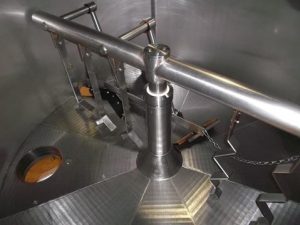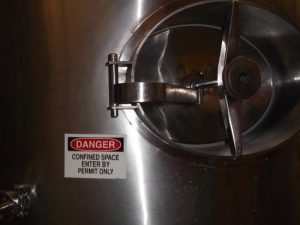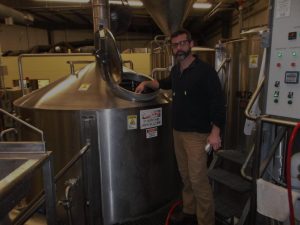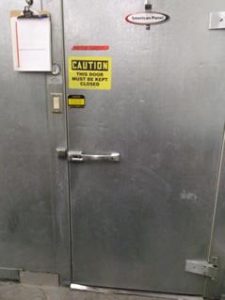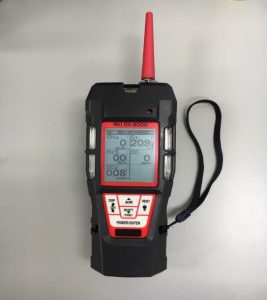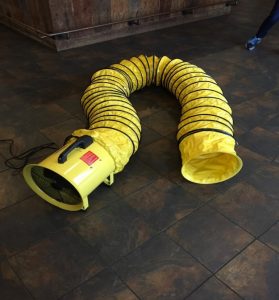Safety on Tap!
Chapter 3 – Confined Space Safety
By Terry Botts
Occupational Health & Safety Consultant
Confined Space entries are probably one of the most violated practices that take place daily in the craft brewing industry. As a safety professional, having had the opportunity to tour well-established craft beer producers, I have found many have little or no training to be able to conduct a proper and safe confined space entry. Some did not even have equipment to test the atmosphere of the spaces they were requiring employees to enter.
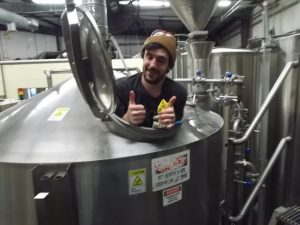
Confined Spaces are abundant and common throughout both large and small Craft Breweries.
Larger Breweries have Health and Safety Departments.
For the most part the larger players in the brewing industry have comprehensive safety programs, policies, and procedures with a support staff to provide training, manage and enforce the programs. Due to their size and visibility to state and federal agencies, strict compliance to OSHA is a normal part of doing business.
Craft Breweries and confined space entry compliance.
First, regardless of the size of the craft brewery, strict compliance to state and federal OSHA regulations relating to confined space entry must be followed. Failing to do so can cause financial burden to your business in penalties and fines, but most importantly could cost someone their life.
What is a confined space?
According to OSHA a confined space is an area or place that has the following three characteristics:
- Large Enough to Enter and Work
- Limited Openings for Entry and Exit
- Not Designed for Continuous Worker Occupancy
A space must meet all three of these criteria to be classified as a confined space.
Classification of Confined Spaces.
There are two types of confined spaces; Non-Permit and Permit required. How can you determine one from the other?
Non-Permit Confined Spaces do not have:
- A hazardous atmosphere
- Engulfment hazard
- Internal configuration hazard
- Or any other recognized hazard.
Permit required confined spaces have the potential to have any or all of the conditions listed above.
If all possible hazards can be eliminated prior to anyone entering a confined space, then and only then a permitted space may be reclassified to a non-permit required confined space.
What is considered an entry?
Any time a part of the body passes through an opening into a confined space it is considered an entry. Something as simple as reaching into a tank or sticking your head into a hatch opening to inspect a vessel is considered an entry.
Why is this so important?
Let’s face it, there is no possible way a craft brewery can produce a finished product without having at least one or several confined space entries occurring during the brewing process.
In 2011 OSHA Investigations identified 188 deaths in confined spaces:
- 146 atmospheric hazards
- 42 mechanical hazards
NIOSH studied 55 Confined Space incidents involving 88 deaths.
- Only three of the victims were trained
Two of every three people who die in a confined space, were not the original entrant.
According to OSHA from 2005-2009 in 28 different states there were a total of 481 confined space entry fatalities. This averages to about 1.85 fatalities per week or about 1 fatality every 4 days. This data covers incidents with at least one fatality or death, and do not include incidents that only resulted in serious injuries or illnesses.
Out of the 481 deaths, 298 of these occurred during construction, cleaning or repairing activities.
It should be noted that 83 of the deaths were individuals in management positions.
Most of the deaths (294) were caused by physical hazards, while surprisingly, hazardous atmospheres only accounted for 160 deaths.

29 CFR 1910.146 Permit-Required Confined Spaces.
What do I need?
To be safe your business needs to understand the requirements. A qualified person needs to access the facility and identify and label all the known confined spaces. Written policies and procedures must be developed for each piece of equipment. Also, employees need to be trained on the specific procedures prior to any entry activity; if respirators are required other issues need to be addressed prior to an employee being allowed to use it. The list goes on and on.
State and Federal requirements.
To get an idea of what is required go to the department of labor’s website https://www.osha.gov/SLTC/confinedspaces/index.html and research section 29 CFR 1910.146 Permit-Required Confined Spaces. From there you will find the following topics and what every employer is required to have:
- Policy
- Definitions
- Responsibilities
- Procedures
- Contractor requirements
- Employee Training
- Permit System
- Alternate Procedures
- Rescue Plan
- Confined Space Workplace Evaluation
All of the above is required to be in place prior to anyone entering a confined space.
Where to get help
If you have no one with the expertise to develop these policies and procedures and conduct the necessary training, reach out to a Health & Safety Consulting firm to assist you with these issues. Remember non-compliance is not an option.
For additional information Contact LCI at call us at 804-340-6085
http://www.lcinnovations.com/

